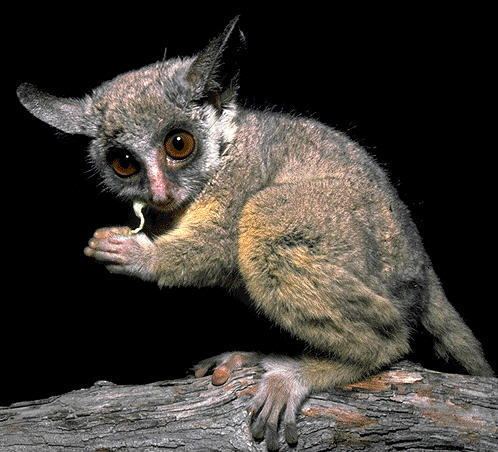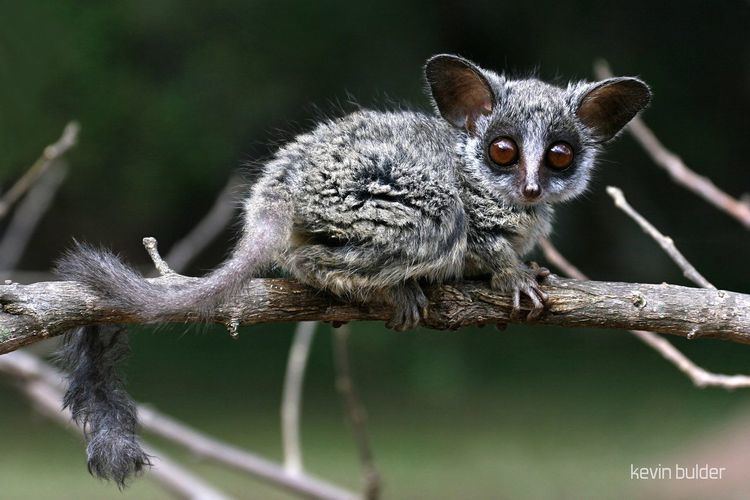Scientific name Galago Rank Genus | Phylum Chordata Family Galagidae Higher classification Galago | |
 | ||
Lower classifications | ||
Lesser bushbabies, or lesser galagos, are strepsirrhine primates of the genus Galago. They are classified, along with the bushbabies (genus Euoticus) and the rest of the galagos (genus Otolemur), in the family Galagidae. They are probably the most numerous primate in Africa, and can be found in every large forest on the continent, galagos also prefer savannahs, woodlands, riverine bush and the fringes of forests. . They mark their territory by urinating on their hands and leaving traces on the trees they climb across, and they follow these detectable paths through the trees night after night, males will also urinate on females to mark them . They are related to lorises, and have similar behavior and anatomy. They are much faster, however, and typical hunt by speed rather than by stealth. Primitive bushbabies are thought to have been the ancestors of all lemurs.
Contents

Breeding
Lesser bushbabies usually give birth during the rainy season. The offspring are usually twins. After the birth there is usually a second period of heat. A female’s gestation period is between 125–142 days and will usually consist of the female mating with up to 6 different males.

Lesser bushbaby mothers initially shelter their offspring in a nest or tree hollow, later on concealing the infants in foliage while they forage at night. In some species, such as dwarf galagos (Galago demidoff group), the day-sleeping nests may be shared by groups of females or occasionally by visiting males.
Diet
Galagos generally consume insects and gums, however some have been known to eat small invertebrates.
Appearance
Galagos are brown grey to light grey in color. With many showing a yellowish tint to the sides and limbs. They also have a distinct dark marking around the eye.
Behavior
Galagos are tree dwelling primates and are capable of leaping great distances, using flattened disks on their feet and hands as a way of grasping branches. However they do walk on the ground sometimes, either bipedally or on all fours. Galagos are solitary foragers, however they do meet up at night in groups, and sleep during the day in groups of around 6. Calls are a big part of galago life and there are up to 18 distinct calls. All these calls are part of three categories, defensive and aggressive, social contact and annuciatory. They also have a very highly developed hearing.
